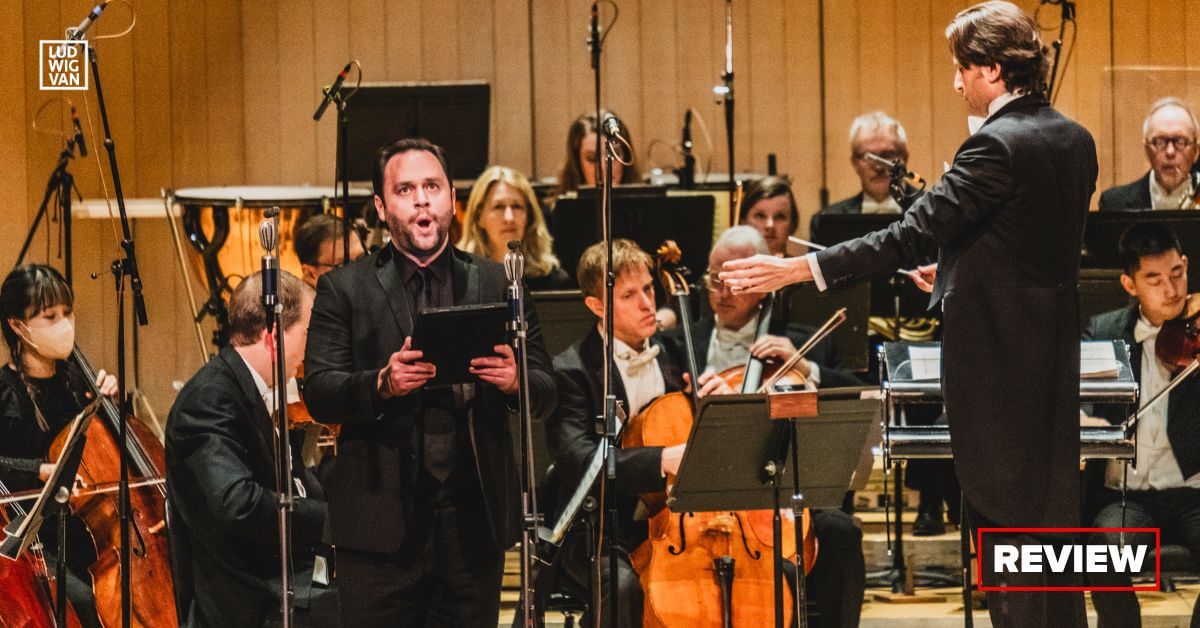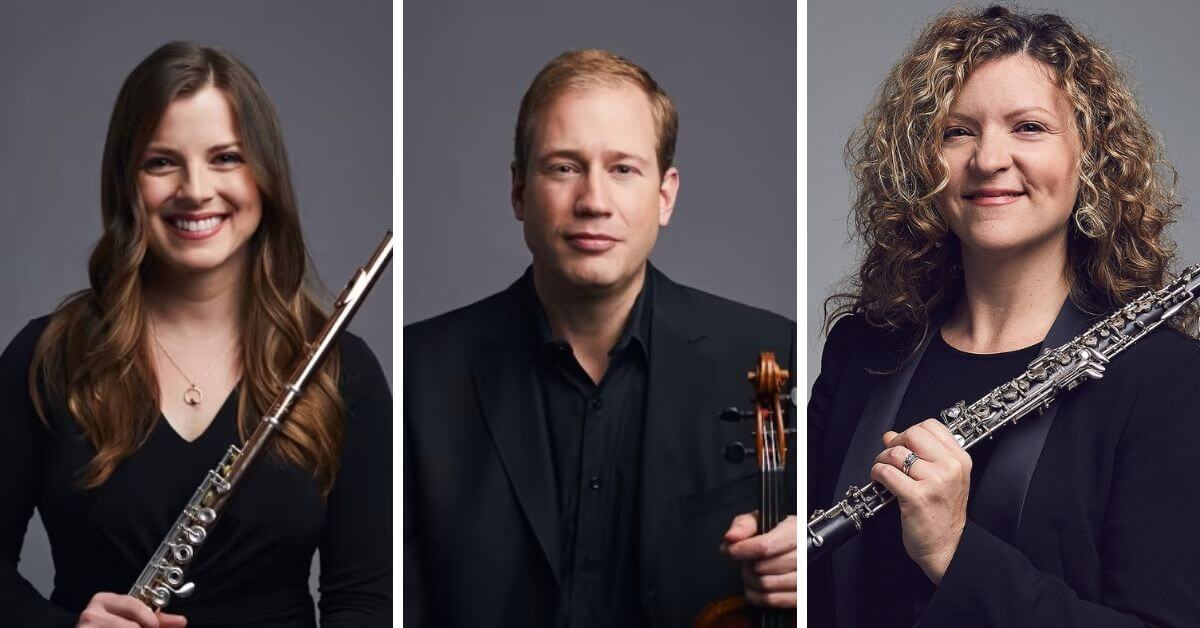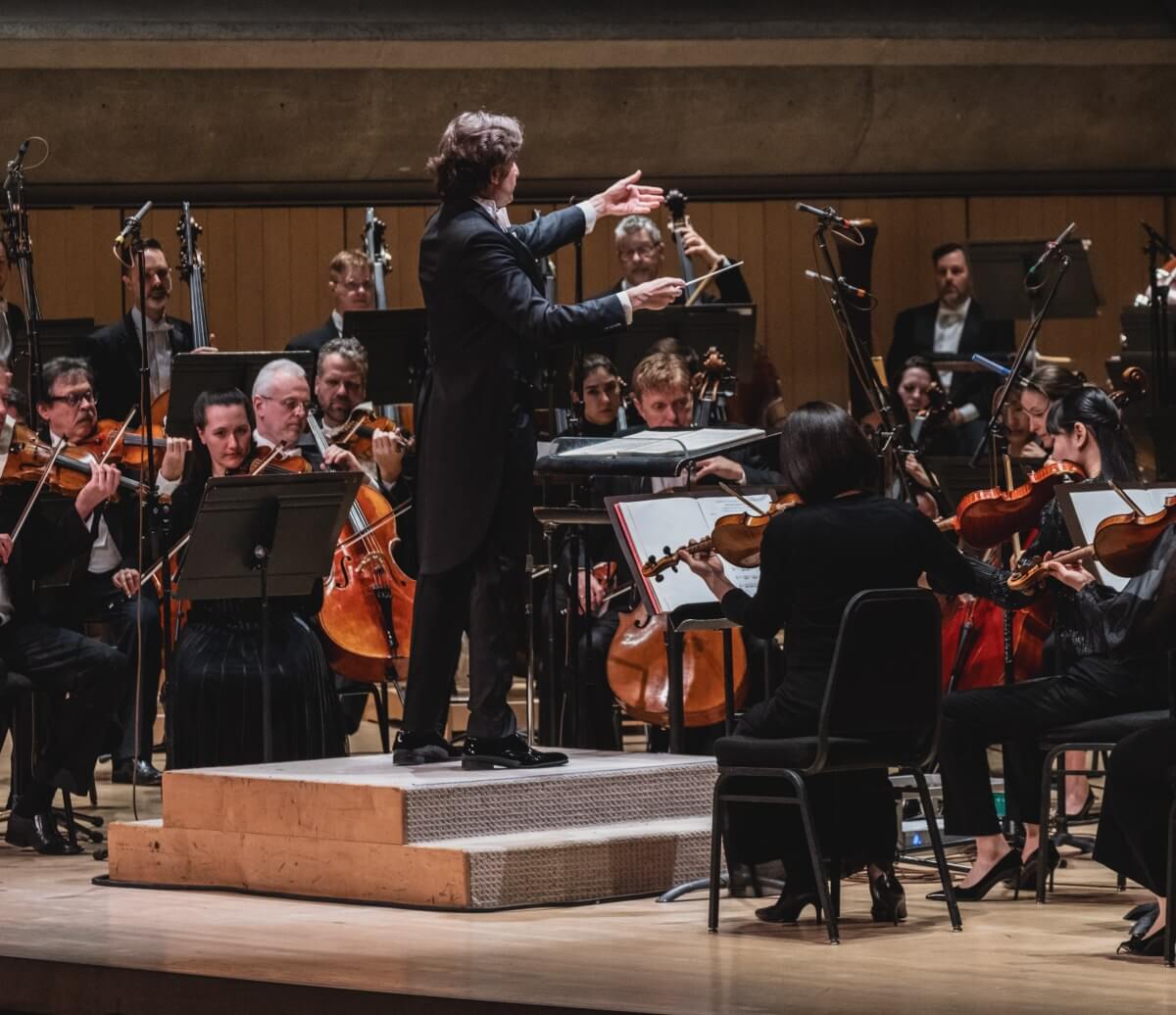
Kelly-Marie Murphy: Curiosity, Genius, and the Search for Petula Clark, TSO Commission (2017); Stravinsky: Divertimento from Le Baiser de la fee (The Fairy’s Kiss), 1949 version & Pulcinella (complete ballet)/ Toronto Symphony Orchestra, Gustavo Gimeno, conductor. Roy Thomson Hall, February 23, 2024 (repeated February 24).
The 2023-24 TSO season has been quite a ride — Gimeno incorporated many contemporary works and new commissions, since he has taken the music directorship. Though it may be difficult for the TSO to constantly prepare unfamiliar works, it brings many benefits to both the orchestra and the audience — the ensemble playing is constantly improving, and many audience members feel positive about the new experience.
Stravinsky’s contribution to ballet music is staggering — so successful that his big three: the Firebird, Petrushka, and the Rite of Spring, has deeply permeated pop culture and beyond, quoted in television commercials to pop tunes. However, his exploration of other styles such as 12-tone music in Agon, and Orpheus, the neoclassicism of Pulcinella, and Romanticism — heavily infused in the Fairy’s Kiss, are often neglected on stage, despite their finesse and ingenuity. It was a good fortune to see that this evening’s program being focused on Stravinsky, on his lesser-known works: Fairy’s Kiss (Le baiser de la fée), and Pulcinella.
Fairy’s Kiss, an homage to Tchaikovsky, re-illustrates beloved melodic fragments from Tchaikovsky’s music with Stravinsky’s own signature. The recomposition and synthesis that come from fusing the romantic threads through stretching and compression, recombination, and new punctuations — often with Stravinsky’s signature off-beat rhythmic drive — require nimbleness of the mind and technique. A true chameleon, Stravinsky’s modulations, often made of atonal pivots and rhythmic reorganization, create many tight corners, and the TSO members negotiated these corners with much finesse this evening.
The principal’s solos — especially Kelly Zimba (flute), Joseph Johnson (cello), and Jonathan Crow (violin), in particular — were exceptional in their musicality and suppleness for the Fairy’s Kiss, and the textural consistency and quicksilver changes between solos and ensemble tutti were impressive tonight. Constantly moving from full-tutti ensemble to individual solos, then dipping in for agile chamber playing, then back to tuttis and solos — it’s tricky business, especially in his crystalline-clear neoclassical works where every little blemish is noticeable.

Another kudos was in Fairy’s Kiss’s ensemble sound; Stravinsky and Tchaikovsky are a world apart in their soundscape — Tchaikovsky belonged to the time of the steam turbines, while Stravinsky only just died in 1971. It is so easy to squeeze every Stravinsky into a modern pointillism with a hint of viciousness, however, this evening, TSO managed to create a lovely, round sound that signifies Tchaikovsky for us — a sound imagined and created in the yearning of the past — no small feat.
Pulcinella, employing a much smaller ensemble, requires a true chamber orchestra mindset, where the entire ensemble must pull together in all aspects — harmonic intonation, rhythmic accuracy, and ebbs and flows of myriads of magical colours. The extra logistics of accompanying three singers add further challenge to the work. However, as they’ve just finished recording the work for Harmonia Mundi — TSO’s second project with the label — the ensemble was tight, airy, and evocative.
Pulcinella’s beautiful and demanding oboe solos were masterfully played by the principal oboe, Sarah Jeffrey. The duo horns, Neil Deland and Audrey Good, were excellent, taking the role closer to woodwinds this time, playing seamlessly with each other, and switching easily between the two contrasting colours of both the woodwind sections and the two solo brass players. Perhaps a very small thing to notice, but having the string sections consistently play their pizzicatos in sync was also quite impressive.

The three singers: Isabel Leonard, Paul Appleby, and Derek Welton, were lovely — especially in the laconic Andante — Sento dire no’nce pace, where the trio sang so serenely and ironically, about the disappearance of peace, as love brings so much more — not only joy, but of agony and suffering. The balance between the singers and ensemble was mostly good, but during the fury-charged “Una te fa la ‘nzemprece,” we did lose Paul Appleby’s voice a few times, unfortunately.
Rounding this program of elegant two Stravinsky ballets was Kelly-Marie Murphy’s homage to Glenn Gould and his fascination with British pop singer Petula Clark. As the concert opener, it was the largest ensemble, and echoed Stravinsky’s precision in its rhythmic drive and contrast between the supple, almost bare melodic contents and a good, old school ruckus tutti playing. The scale change from Curiosity, Genius, and the Search for Petula Clark, to the Fairy’s Kiss, then to Pulcinella: full-scale symphonic setting transitioning to the small chamber ensemble.
It is also interesting to note that having only three works programmed may have created a real favour for both the audience and the symphony. Though the actual program length was not any shorter, having just three works gave a tighter frame, where each work’s soundworld could settle in the minds of the audience, and perhaps it also helped the orchestra, as they did not have to switch out from one thing to another so frequently, which sometimes resulting inconsistency in performance level.
Overall, this was the most enjoyable programming and performance from the TSO 23/24 personally. It was exciting to see a lesser-known dimension of Stravinsky: the neoclassicist with precision of watchmaker and jeweler, creating Apollonian soundscape of strength, suppleness and flexibility. Such fine playing promises an excitement for next week, where Gimeno invites Spanish piano giant Javier Perianes, with the genius Francisco Coll’s fiendishly difficult work: Ciudad sin sueño: Fantasia for Piano and Orchestra.
Are you looking to promote an event? Have a news tip? Need to know the best events happening this weekend? Send us a note.
#LUDWIGVAN
Get the daily arts news straight to your inbox.
Sign up for the Ludwig Van Toronto e-Blast! — local classical music and opera news straight to your inbox HERE.
- CRITIC’S PICKS | Classical Music Events You Absolutely Need To See This Week: July 22 – July 28 - July 22, 2024
- CRITIC’S PICKS | Classical Music Events You Absolutely Need To See This Week: July 15 – July 21 - July 15, 2024
- CRITIC’S PICKS | Classical Music Events You Absolutely Need To See This Week: July 8 – July 14 - July 8, 2024



